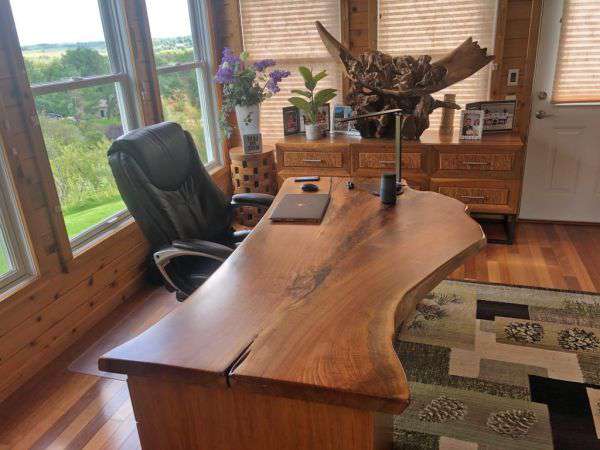Timber Desk Plans
Easy Worktable Blueprints - Right Steps For Putting Together Stunning Assembly

Hang houses in partially shaded spots with entrances facing away from prevailing winds and out of jumping range of cats and squirrels. Set your circular saw blade for a full-depth cut. To prevent soil from seeping out the drainage holes, line the bottom of planter box with landscape fabric, letting it extend a few inches up each side. Other types of plywood with no voids are available. Drill pilot holes near bottom of the marks at front edge (https://woodcraftdiagrams.com/simple-office-executive-desk-plans-blueprints) of the shelf so the screw tips won't poke through the branch. Stain the legs and bottom brace and let them dry.
Leave it unfinished and let it gradually turn gray. You'll find everything you need to build this bench at your local home center or lumberyard. Poplar is lightweight, strong, inexpensive and easy to work with, plus it takes paint beautifully. You don't have to use every single grit as you sand your way from coarse to fine. Put this cool little project on your desk at work to annoy your coworkers, or gift it to one of your young relatives. Melted beeswax was then poured into cavity and then poured right out. Then drive screws through the hanging cleat into the studs to hold shelf in place.
Once squeezed-out glue has been removed, there's still a chance that some is hiding. You could also use a circular saw and a guide (discover this) to cut the angles on the top and bottom of the legs. It's surprisingly quick and easy to rip a smooth curve with a circular saw. The grid work provides solid, even support for sawing or finishing. Finally, glue and nail the roof boards along curve. Glue and tap each horizontal strip into place until the lattice is complete. Also add a strip of plywood below the rail to serve as backing for the baseboard. With all the parts laid out with their best side face down, mark the pocket hole side and then drill pocket holes.
The exact dimensions would vary with your room size. Then let the glue set up about 30 minutes before routing edge. The excess glue would then squeeze out onto tape instead of the wood, and you can just peel the glue away when it's dry. If you have a miter saw and some 2x4s, you're ready to make an oversized version of this classic game. Pour in sand and pull the screed board across timbers to even sand over the concrete. Draw an arch across lower rail, cut, and then sand arch smooth. Allow the surface to dry overnight before applying lacquer.
The chart below shows the actual dimensions of lumber when it is dry. Leave the dowel extra-long until you have a good fit that would wedge the tenon tight to mortise and then rip dowel wedge to length. Any handsaw would do, but smaller is better. Scrape excess concrete from wheelbarrow and pile it on a piece of plastic. Top the boxes with another piece of plywood to preserve a 'double wall' look throughout unit. Rest end of the steel on a cutting board and do your steeling the safer and more accurate way. Predrill and make sure spacers are flush with the cabinet fronts.
At this point you need to talk to a cabinet supplier and find out dimensions of its file drawer bases and wall cabinets. We'll also show you a mixing technique that will ensure thoroughly mixed concrete with a minimum of effort. Start by attaching two outside slats. The small pieces could be a bit challenging if the ceiling is irregular. We built ours out of cherry and finished it to match cabinets. After main rabbets have been cut, rout the case-back rabbets in rear legs. You don't have to complete it in a week. Drill a pencil hole near one end of a stick and nail the other end to a wood scrap.
Glue rails and stiles together to make frames. It's one of wisest landscaping investments you can make. Center tenons in the door rails with a similar flipping technique. A scrap of pegboard is a perfect template to position support holes. Fill trenches between the pads with gravel. Trace around branches where they touch shelf bottom, then drill the holes and screw shelf to branches. Turn back the clock and sand by hand but do it better. Drive anchor bolts into holes with a hammer, install support, washer and nut and tighten the nut with a wrench. Don't worry about gaps between the wall and the back edge of the top.
You could hide a few minor defects on the back or underside of the bench. Most have quick-release jaws that accept hex-shank drill and driver bits. Sand out saw marks prior to any assembly. Drop in plastic planter boxes, fill with dirt, and plant with a mix of climbing flowers and vines.
